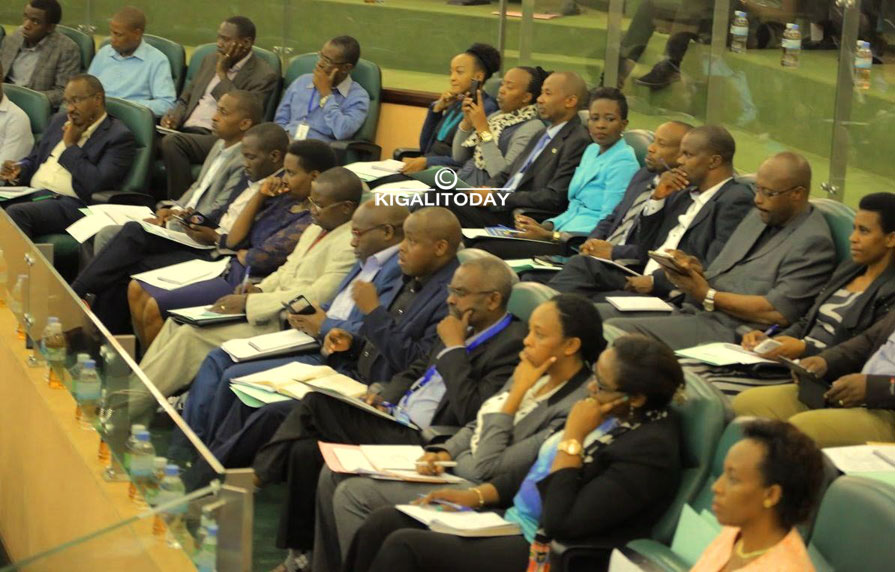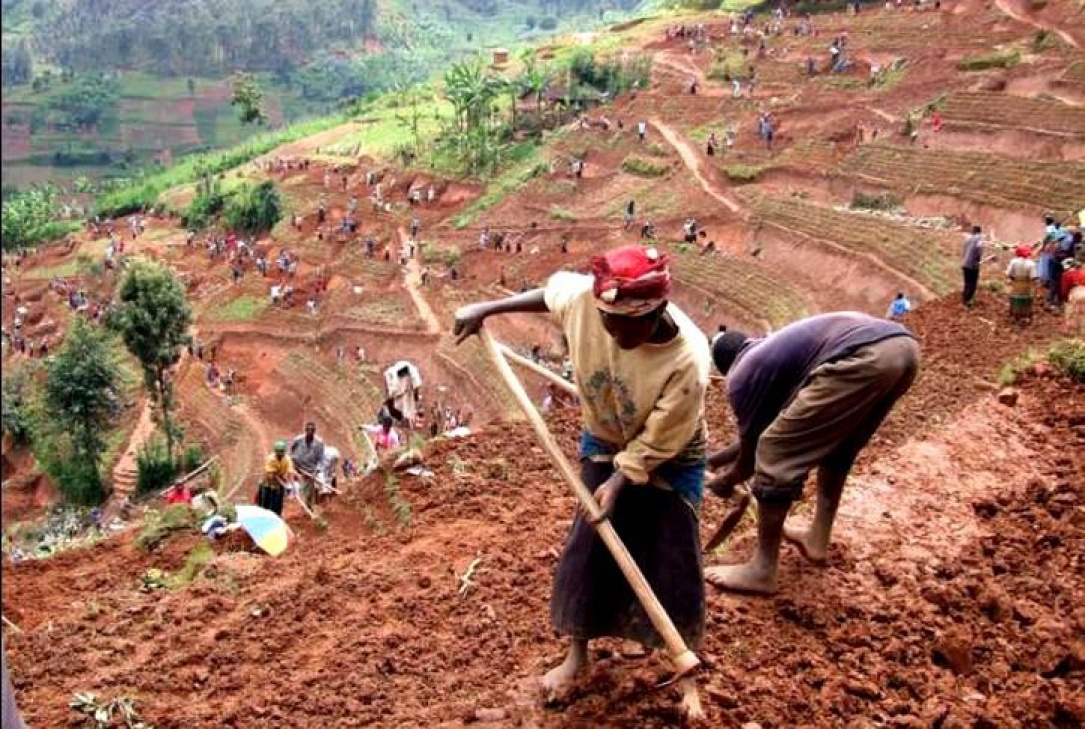
Students at IPRC Kigali during 6th graduation Ceremony, Kicukiro in March
Unemployment statistics in Rwanda previously provided by the statistics body have been inaccurate, KTPress reports.
The National Institute of Statistics of Rwanda (NISR) on Tuesday admitted before Parliament that they were using an inaccurate rating system.
In a recent NISR pilot survey, unemployment levels are higher among educated Rwandans contrary to Integrated Household Living Conditions Survey (EICV4) released in 2015.
Yussuf Murangwa NISR’s Director General told a consultative meeting on labour promotion that previous measures stated that a person working one hour a week is considered employed.
However, using the 2013 International Labour Organisation (ILO) measurements, officials said new statistics indicate that uneducated Rwandans who spend more than three hours in farms or have a paid job are now considered employed.
The new measures adopted by Rwanda now show that general unemployment rate is 13.2%, compared to 2.5% that was announced in EICV 4.
With the new figures, many Rwandans fall under unemployment rate by level of education attainment category.

Members of Parliament listen to presentation by National Institute of Statistics of Rwanda (NISR)
Unemployment among Rwandans who completed upper secondary is the highest at 23%, followed by the unemployment among graduates of tertiary education with 18%.
On another side, the rate of unemployment among uneducated is 10% – the lowest.
Moreover, in Rwanda 16% of people that depend on agriculture are unemployed.
Murangwa said this pilot study from which conclusive results will be released in August is not a cause for alarm.
“It doesn’t mean unemployment increased, it essentially means that new measure captures situation better and that unemployment is high. However, we will be publishing regular and detailed employment statistics released at the same time with the Growth Domestic Product results,” Murangwa said.
However, he said many employed Rwandans work for very few hours and their productivity is minimal compared to expectations of the jobs.
For example an average civil servant works for five hours a day, instead of at least nine hours, which makes an average of 38 hours a week.
“This is a set back in the country’s productivity and it is evident among 50% of the labor force,” Murangwa said.
The EIVC4 showed that over 140,000 jobs were created annually since 2011 to meet the 200,000 target every year by the year 2018.
Lawmakers said there is a mismatch between unemployment and the country’s business performance.

About 16% of Rwandans that depend on agriculture are unemployed
Current figures show that more Rwandans are unemployed despite a 24.4% increase in business (2011-2014) coupled with government resolve of jobs creation.
This has seen further increase in unemployment gaps in the urban (16%) and rural (13%) areas, and along gender lines, with more women invisible in the job creation drive.
As per the MPs, some jobs are created, but they do not yield expected results.
The example that was given is the Integrated Business centers- ‘agakiriro program’ established in all districts to create skills and employment for the youth.
MPs said that the program has hit a setback due to lack of innovation and financial skills among trained youth.
The Minister of Public Service and Labour, Judith Uwizeye said that these gaps need to be closed by creating unconventional job opportunities for youths.
“We have many youths who are idle yet there is a lot of land owned by government. We can give marshlands to organized youth to become productive instead of waiting to be employed,” Uwizeye said.


2 comments
[…] agricultural targets. But with 19 percent of the population aged 15 and 24, and with a youth unemployment rate of 13 percent, one agriculture training center is […]
[…] agricultural targets. But with 19 percent of the population aged 15 and 24, and with a youth unemployment rate of 13 percent, one agriculture training center is […]
Comments are closed.